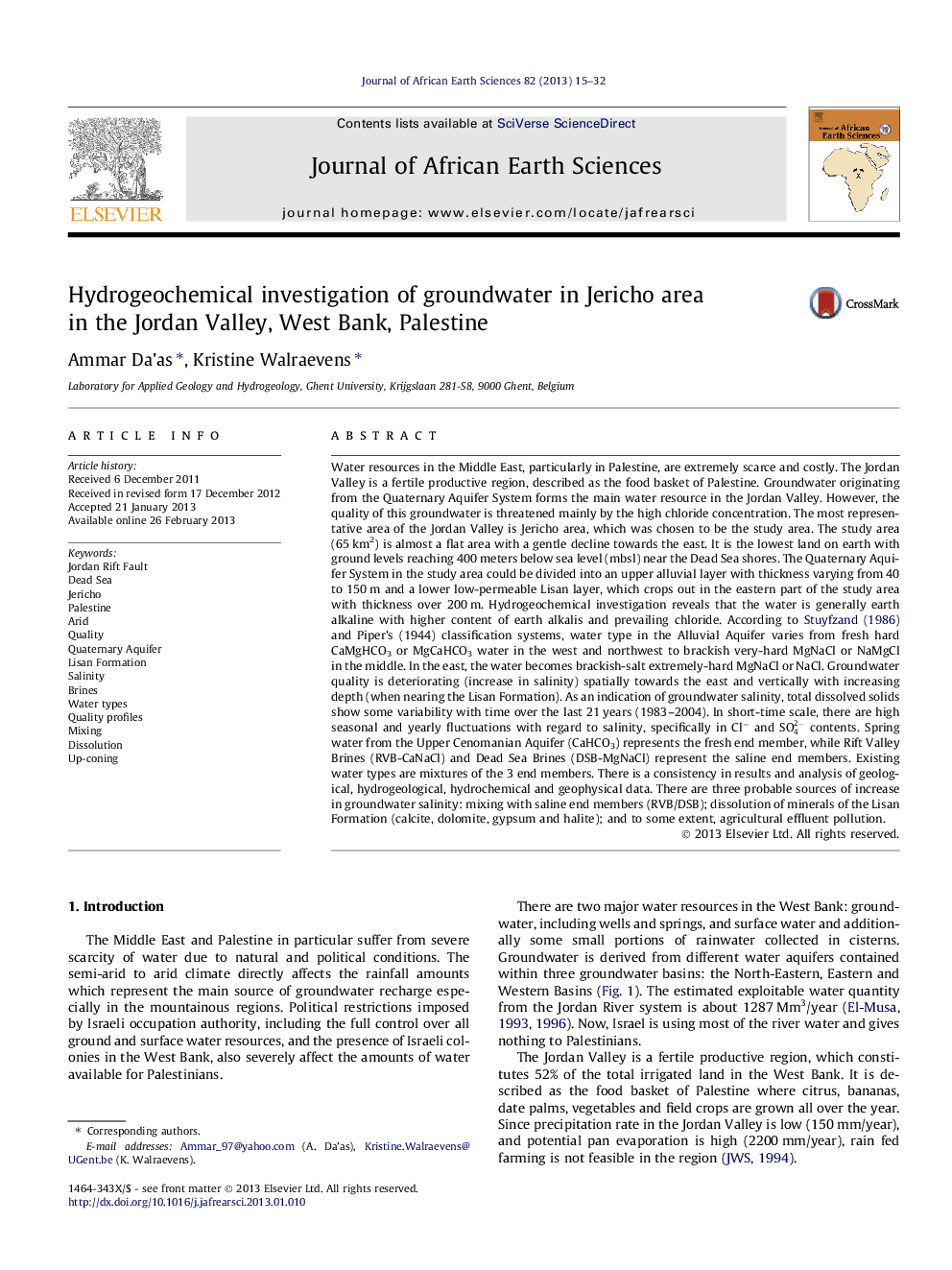| کد مقاله | کد نشریه | سال انتشار | مقاله انگلیسی | نسخه تمام متن |
|---|---|---|---|---|
| 4728931 | 1640224 | 2013 | 18 صفحه PDF | دانلود رایگان |
Water resources in the Middle East, particularly in Palestine, are extremely scarce and costly. The Jordan Valley is a fertile productive region, described as the food basket of Palestine. Groundwater originating from the Quaternary Aquifer System forms the main water resource in the Jordan Valley. However, the quality of this groundwater is threatened mainly by the high chloride concentration. The most representative area of the Jordan Valley is Jericho area, which was chosen to be the study area. The study area (65 km2) is almost a flat area with a gentle decline towards the east. It is the lowest land on earth with ground levels reaching 400 meters below sea level (mbsl) near the Dead Sea shores. The Quaternary Aquifer System in the study area could be divided into an upper alluvial layer with thickness varying from 40 to 150 m and a lower low-permeable Lisan layer, which crops out in the eastern part of the study area with thickness over 200 m. Hydrogeochemical investigation reveals that the water is generally earth alkaline with higher content of earth alkalis and prevailing chloride. According to Stuyfzand (1986) and Piper’s (1944) classification systems, water type in the Alluvial Aquifer varies from fresh hard CaMgHCO3 or MgCaHCO3 water in the west and northwest to brackish very-hard MgNaCl or NaMgCl in the middle. In the east, the water becomes brackish-salt extremely-hard MgNaCl or NaCl. Groundwater quality is deteriorating (increase in salinity) spatially towards the east and vertically with increasing depth (when nearing the Lisan Formation). As an indication of groundwater salinity, total dissolved solids show some variability with time over the last 21 years (1983–2004). In short-time scale, there are high seasonal and yearly fluctuations with regard to salinity, specifically in Cl− and SO42- contents. Spring water from the Upper Cenomanian Aquifer (CaHCO3) represents the fresh end member, while Rift Valley Brines (RVB-CaNaCl) and Dead Sea Brines (DSB-MgNaCl) represent the saline end members. Existing water types are mixtures of the 3 end members. There is a consistency in results and analysis of geological, hydrogeological, hydrochemical and geophysical data. There are three probable sources of increase in groundwater salinity: mixing with saline end members (RVB/DSB); dissolution of minerals of the Lisan Formation (calcite, dolomite, gypsum and halite); and to some extent, agricultural effluent pollution.
► Groundwater in the Jordan Valley is threatened by high chloride content.
► The study area is the lowest land on earth reaching 400 mbsl.
► Groundwater is earth alkaline with higher content of alkalis and chloride.
► Salinity increases towards the east and with increasing depth.
► Mixing and dissolution are the probable sources of increasing salinity.
Journal: Journal of African Earth Sciences - Volume 82, June 2013, Pages 15–32
